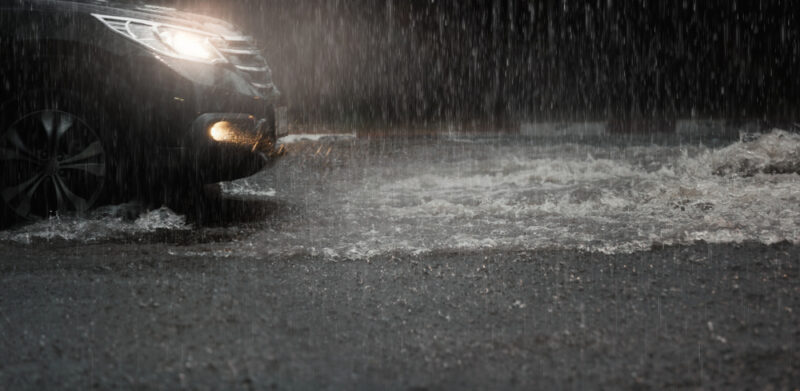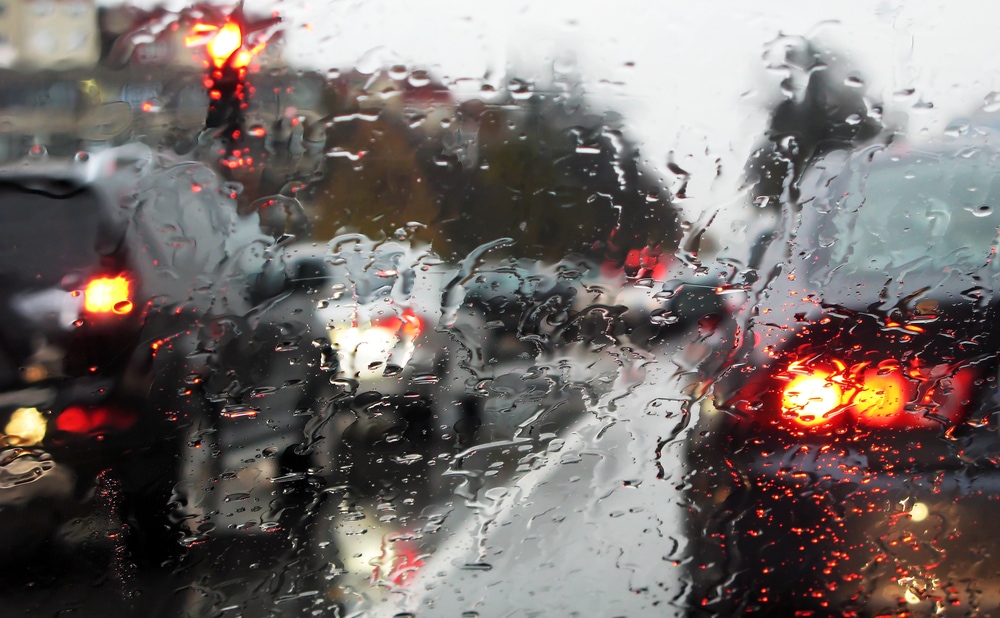Safe Driving in Storms

Are you concerned about the prospect of driving in a storm? Harsh weather conditions can be scary, but there are numerous steps you can take to protect yourself and your vehicle when bad weather is on the horizon. By being prepared, driving carefully, and avoiding danger, you could come through a storm safely on the other side.
The following guide lays out the best tips for safely driving in stormy weather. Some of these tips, like purchasing adequate auto insurance coverage, should be done ahead of time. Other tips apply in those cases where you find yourself in sudden and unexpected severe weather.
Should I Avoid Driving in a Storm When Possible?
It might seem obvious, but the best way to avoid the dangers of a storm is to not be caught in one. If you find yourself with flexibility in planning your time, waiting out a storm could be one of the best decisions you ever make. According to the National Weather Service, there were nearly 800 weather-related fatalities in 2021.
Of course, there are times when waiting out a storm might not be possible. If you are facing an emergency or a deadline you cannot miss, driving through a storm might be your only option. In these cases, it is important to take the other steps necessary to avoid a crash.

Should I Pull Over and Park If Caught Driving in a Storm?
Many people leave home in fine weather, only to later encounter sudden and severe conditions. When a storm hits while you are already driving, simply not driving at all is not an option. If you are in severe weather while traveling, your best option is to pull over your vehicle and park.
Remaining parked until the weather clears could help you avoid an accident, but it is also important to do so in a safe place. If you are on a roadway without adequate shoulder space, it could be more dangerous to stop. Pull off at the first safe place and wait out the storm.
How Do I Prepare For Seasonal Weather While Driving?
Each season has its own risks of severe weather. In colder months, snow and ice are the primary threat. Summer months bring dangerous heat, while rain can be an issue in the spring and fall. Thankfully, you can take steps to prepare your vehicle for every season. Making sure your car is ready for the winter or the summer months can include ensuring the car’s fluids are topped off, your tire chains are in the trunk of your vehicle, and water and spare clothes are packed inside.
How Do I Prepare for Emergencies While Driving?
The unfortunate reality is that accidents can happen in severe weather regardless of how careful you are. Other drivers on the road might cause an accident or changing road conditions could make it impossible to avoid a crash.
In the summer months, heat is a major environmental threat. In case you are in an accident, it is helpful to have water packed in your vehicle at all times. Keeping a mobile phone charged at all times is also helpful, as it could represent your best chance of securing assistance. Make a roadside emergency kit that includes the tools needed to change tires or warn other motorists of your stopped car.
Another useful option to keep in mind is roadside assistance. When accidents happen, having help only a phone call away could make all the difference in your time of need. With roadside assistance, you could have your vehicle towed safely even in stormy weather.
With Bluefire Insurance, You Can Find the Right Car Insurance Policy
The steps you take prior to leaving home could impact your ability to navigate a storm safely. Driving in storms is never easy, but careful planning could mitigate most of the risks. Keep storm safety in mind every time you get behind the wheel.
When severe weather results in an accident, Bluefire Insurance can provide you with coverage for all of your damages. Agencies that offer Bluefire Insurance can help you find the right policy that fits your needs and protects you when things go wrong. Contact us today for help setting up your policy or call us at (866) 424-9511.
Related Articles
-
August 7th 2023
The Top 10 Biggest Issues Auto Insurance Agents are Facing Today
In the post-pandemic world, insurance agents face numerous new challenges, as well as some old ones. In[...]
-
April 23rd 2025
The Top 10 Places Smart Independent Insurance Agents Get Their Industry News
As a smart, independent insurance agent, you should have an arsenal of trustworthy news sources you regularly[...]
-
April 7th 2025
Risk Management for Independent Insurance Agents
Everything in the insurance industry revolves around risk management. As an independent insurance agent, you know better[...]
-
March 17th 2025
Upcoming Insurance Conferences in 2025 to Progress Your Career
One of the top ways of increasing the size and value of your network as an independent[...]




